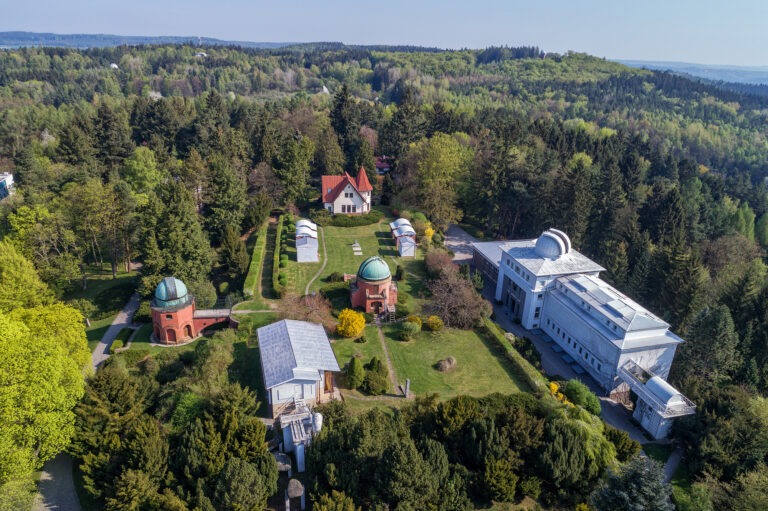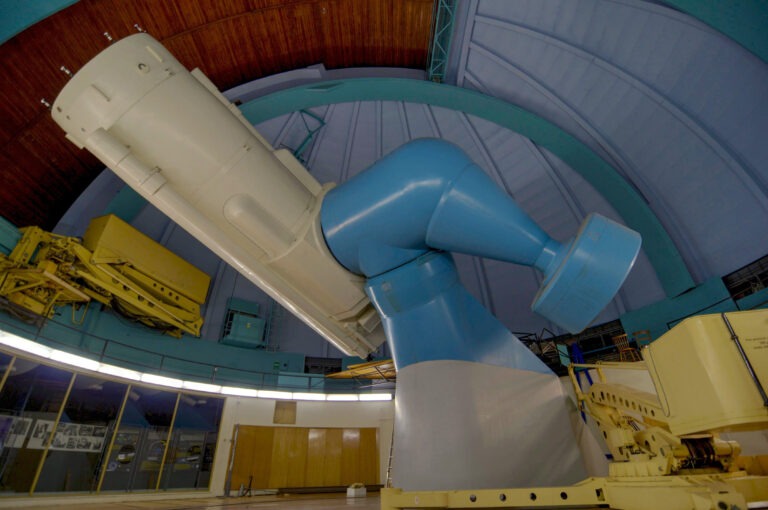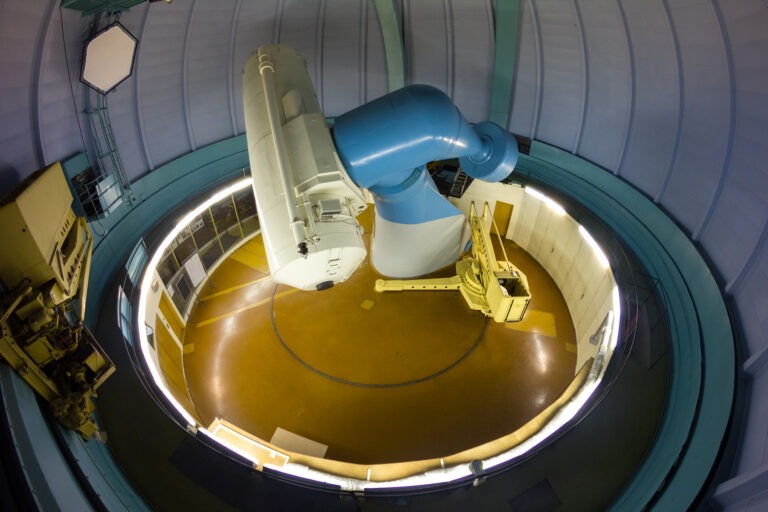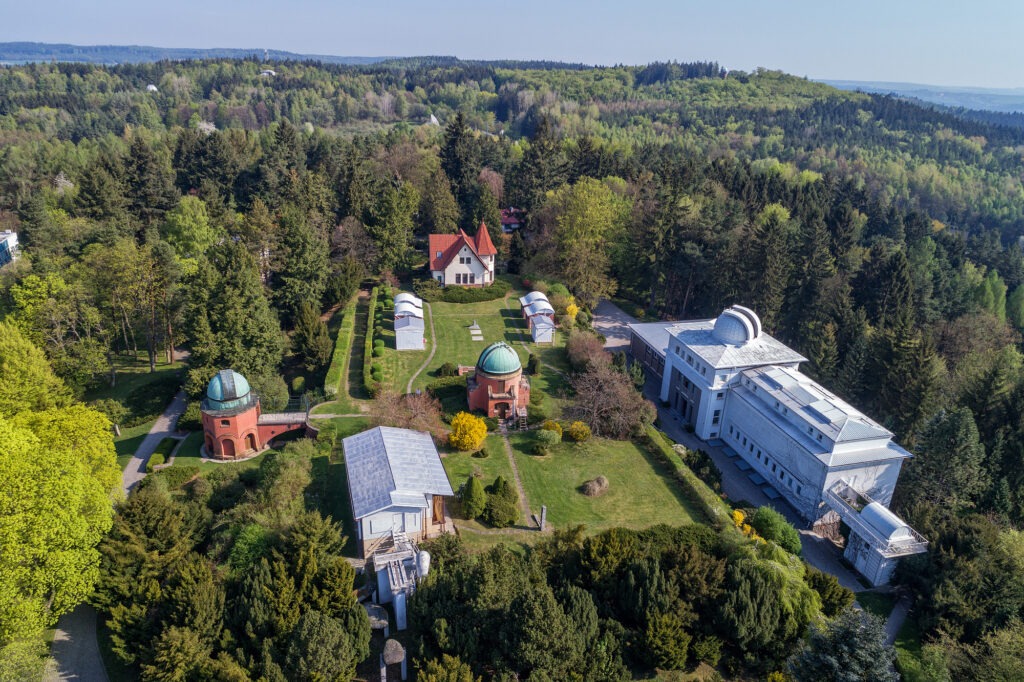
Astronomical Institute of the Czech Academy of Sciences
General description
ASU is the largest research organization in the field of astrophysics and space research in the Czech Republic. The institute takes part in many international space-research projects as well as in the large ground-based observatories. The institute is a significant contributor to the research carried out by the European Southern Observatory (ESO) and involved in projects on the development and construction of instruments for missions by the European Space Agency (ESA). The research conducted at the institute covers a wide range of topics; from the immediate environs of the Earth to distant galaxies and black holes in their cores. The research activities are carried out in four scientific departments: 1) Department of Solar Physics, 2) Department of Stellar Physics, 3) Department of Interplanetary Matter and 4) Department of Galaxies and Planetary Systems. About two thirds of all impact papers published by the researchers of the institute are published in the most renowned astronomical journals like Astronomy & Astrophysics, The Astrophysical Journal and Monthly Notices. Over the past years, the institute had over 90 papers published in impact journals per year, few more dozens in conference proceedings, and about the same amount of other publications in bulletins and other astronomical periodicals.
Key Research Facilities, Infrastructure and Equipment
- Perek 2-m optical telescope: the largest optical instrument in the Czech Republic equipped with single order and echelle spectrographs, and a recently installed photometric camera. This telescope is mainly used for observations of stars and stellar systems including those with exoplanets. These objects are studied by members of department, often in an international collaboration. Other telescopes available for observations are the D50 telescope and the BART robotic telescope, both devoted mainly to observations of γ ray burst afterglows.
- 10m-dish radiotelescope
- HPC clusters
- The institute hosts two Research Infrastructures listed at the National Roadmap of Research Infrastructures and EU Roadmap ESFRI: The European ALMA Regional Center – Czech node and European Solar Telescope – Czech participation.
Contact person
Contact us to know more about our location and work environment. Please use the main contact for questions related to administrative matters. Please contact the supervisors/group leaders of respective research groups regarding feasibility of your research proposal with regard to the research group activities.
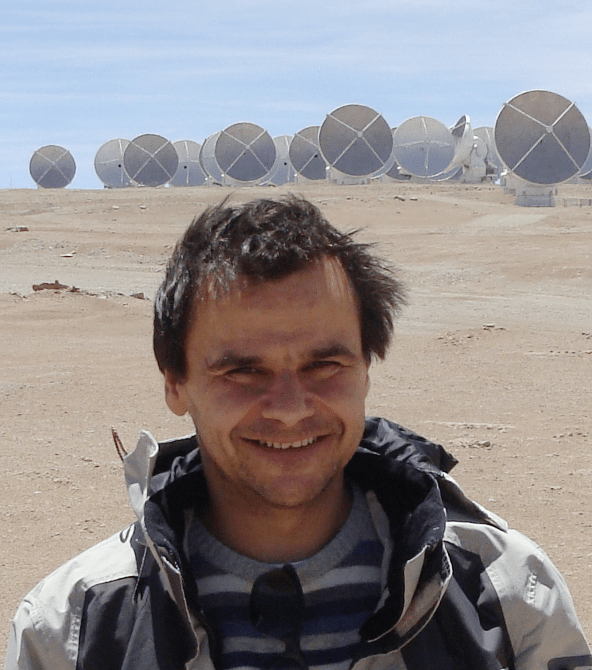
Your future supervisors


Jan Jurčák
I am the head of the Solar Department of the Astronomical Institute of the Academy of Sciences of the Czech Republic in Ondřejov. I did my master’s and doctoral studies at Charles University in Prague. After completing my doctoral studies, I worked for two years at the National Astronomical Observatory in Japan. My research focuses on the properties of the magnetic field in sunspots in the lowest layers of the solar atmosphere. To do that, I analyze spectropolarimetric data from both ground- and space-based instruments. I am also responsible for the participation of the Czech Republic in the EST project, a new generation solar telescope to be built on the Canary Islands.
About the position
The successful candidate will join the Solar physics department of the Astronomical Institute of the Czech Academy of Sciences.
The Department consists of four research groups: Physics of solar flares and prominences, Structure and dynamics of the solar atmosphere, Heliosphere and space weather, and Group of solar radioastronomy. The research focuses on various areas of the solar physics including solar flares along with flare-energy storage, release, transport and accompanying heliospheric effects; and evolution of solar active regions, the structure and evolution of sunspots, filaments, and prominences.
The research of the Solar Department can be characterized as a combination of solar observations in optical, radio and X-ray wavebands; analysis and interpretations of data; and theoretical research with extensive numerical modeling of the processes under study. All these activities are based on close collaborations with number of research institutes worldwide. Those collaborations include exchange of various data and their theoretical interpretation, as well as our participation in some of the ground-based and space projects (e.g. ALMA, GREGOR, Solar Orbiter, EST).

Jiří Borovička

Jiří Borovička
I am the head of the Department of Interplanetary Matter of the Astronomical Institute of the Academy of Sciences of the Czech Republic in Ondřejov. I am mostly interested in analyzing optical meteor data, including spectra, with the aim of revealing physical properties and composition of meteoroids entering Earth’s atmosphere as well as their trajectories and orbits. Our group operates a photographic fireball network and meteor video cameras. I have developed tools for analyzing the data and models which can be compared to the data, e.g. a meteoroid fragmentation model or a basic model of meteor spectral radiation. I have supervised several PhD students.
About the position
The successful candidate will be based at the Department of Interplanetary Matter of the Astronomical Institute of the Czech Academy of Sciences. The department consists of two research groups: Meteor Physics and Asteroids. The former group focuses on the physics of the interaction of meteoroids with the atmosphere and on physical properties, composition, and orbits of meteoroids of various sizes. The key research infrastructure is the European Fireball Network consisting of all-sky photographic and spectral cameras located in several countries in central Europe. Fainter meteors are observed by video cameras. The Asteroid group focuses on physical studies of small asteroids, binary asteroid systems, paired and clustered asteroids, and asteroids in excited rotation states. The main observational instruments are the 1.54m Danish telescope at the European Southern Observatory, La Silla, Chile, and the 0.65m telescope at Ondřejov.
The fellow may also liaise with international collaborators, e.g. University of Western Ontario, Canada, through international secondments. Given the main focus of our department, the expected outputs of the fellowship are high-level scientific publications.
The successful candidate needs to have a Ph.D. in astronomy, astrophysics, planetary sciences or in a related field. Previous experience with meteor or asteroid research, either observational or theoretical, will be an advantage. The candidate should be able to work and think independently but also collaborate with other members of the team.


